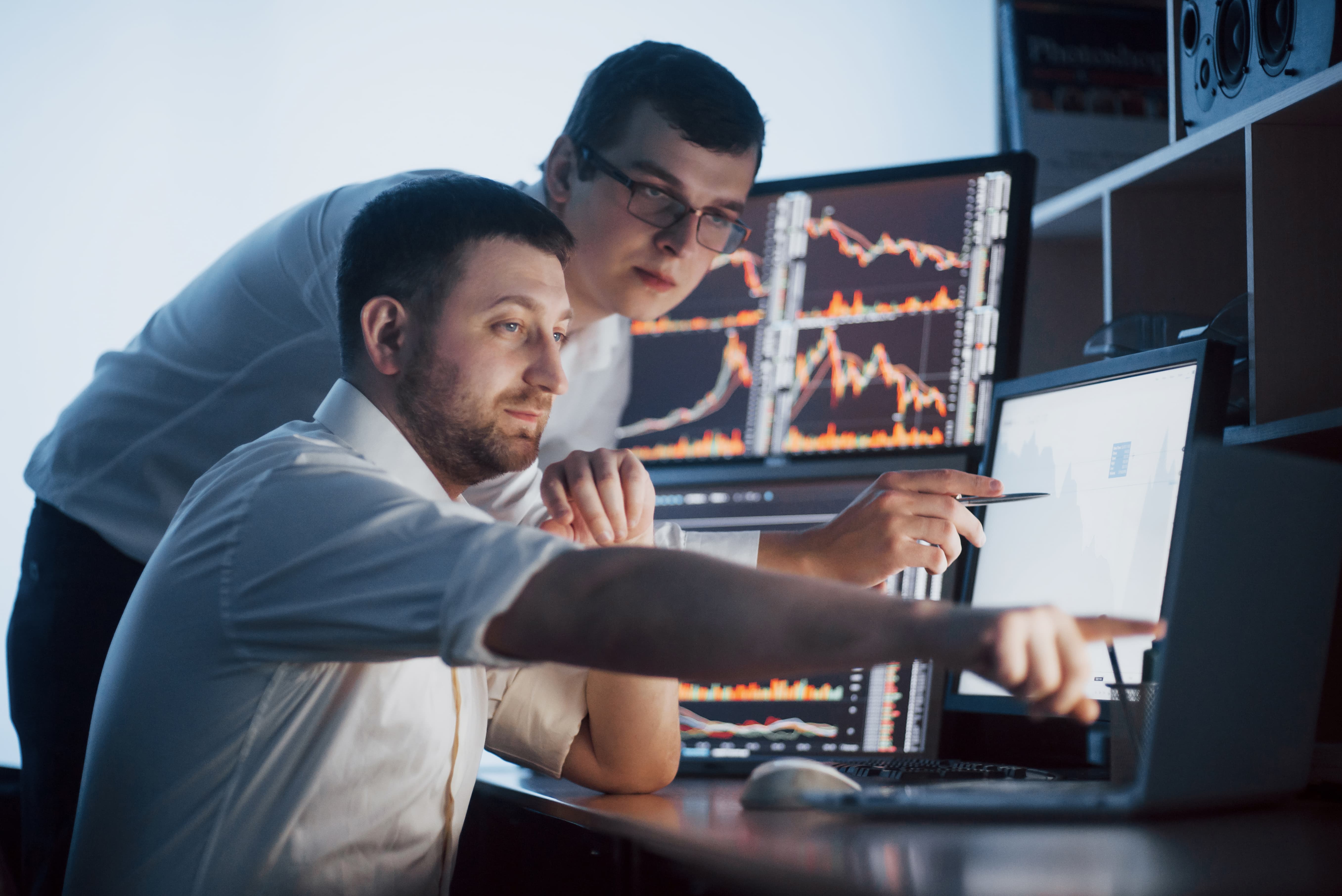Algorithmic trading, also known as algo trading or automated trading, represents a significant evolution in the financial markets. It involves the use of sophisticated computer algorithms to execute trading strategies automatically. Explore the basics of forex trading, including market structure, currency pairs, and choosing a trading platform.
Understanding Algorithmic Trading
Algorithmic trading operates at the intersection of technology and finance, utilizing advanced mathematical models and statistical analysis to make swift trading decisions. The key objectives of algorithmic trading are:
- Speed: In today’s fast-paced markets, speed is crucial. Algorithmic trading allows traders to capitalize on opportunities within milliseconds, something that would be impossible for human traders. The speed at which these algorithms operate can make the difference between profit and loss, especially in highly volatile markets.
- Accuracy: By adhering strictly to predefined criteria, algorithmic trading eliminates the emotional biases that often influence human traders. This results in trades that are executed with a high degree of precision, aligning perfectly with the trader's strategy and goals.
- Efficiency: Automate tasks, freeing you to focus on strategy development for your currency pairs. This efficiency is particularly important for high-frequency trading, where large volumes of trades are executed in a short time frame.
Components of Algorithmic Trading
1. Algorithm Development
The first and most crucial step in algorithmic trading is the development of the trading algorithm itself. Written in languages like Python or C++ to handle complex calculations for currency pairs.
Once developed, these algorithms undergo rigorous backtesting. Backtesting involves running the algorithm through historical market data to evaluate its performance under various market conditions. This process helps identify potential weaknesses and allows developers to optimize the algorithm before it is deployed in live trading.
- For an in-depth look at how algorithms are developed and optimized, explore algorithm development on 24markets.com, where you’ll find resources and tools to guide you through the process.
2. Market Data Analysis
At the heart of algorithmic trading is market data analysis. Analyzes vast real-time data on currency pairs, including price movements, volumes, and order flows. This data is processed using advanced statistical models and pattern recognition techniques to identify trading opportunities that may not be apparent to the naked eye.
For instance, algorithms might detect subtle price patterns or correlations between different assets that indicate a potential trade. These insights enable traders to act quickly and capitalize on market inefficiencies.
- To better understand how real-time data is analyzed and utilized in trading, visit market data analysis on 24markets.com.
3. Execution Strategies
Execution is where the theoretical meets the practical. Once a trading opportunity is identified, the algorithm must execute the trade efficiently. This involves determining the optimal time to enter and exit the market, as well as managing risk through position sizing, setting stop-loss orders, and ensuring adequate portfolio diversification.
Execution strategies are designed to minimize market impact and reduce costs, ensuring that trades are executed at the best possible price. This is particularly important in high-frequency trading, where even a small delay can significantly affect the trade’s profitability.
- Learn about different execution strategies and their crucial role in algorithmic trading, especially in volatile or illiquid markets.
Advantages of Algorithmic Trading
1. Speed and Efficiency
The primary advantage of algorithmic trading is its speed. Algorithms can execute trades in milliseconds, taking advantage of fleeting opportunities that human traders would likely miss. This speed not only allows for quick entry and exit from trades but also reduces transaction costs by minimizing slippage – the difference between the expected price of a trade and the actual price at which it is executed.
Furthermore, algorithmic trading enhances efficiency by automating routine tasks, allowing traders to focus on strategy development and other high-value activities.
- Discover more about how speed and efficiency give traders a competitive edge in today’s fast-moving markets.
2. Precision and Consistency
Human emotions like fear and greed often lead to inconsistent trading decisions. Algorithmic trading eliminates these emotions by following a disciplined approach based on predefined criteria. This ensures that trades are executed consistently, according to the trader’s strategy, without being swayed by short-term market fluctuations or psychological pressures.
This consistency is particularly important in maintaining a long-term trading strategy, where sticking to the plan is often more important than reacting to every market movement.
- Explore how algorithms ensure precision and consistency in trading, leading to more reliable and repeatable outcomes.
Challenges of Algorithmic Trading
1. Technology Risks
While algorithmic trading offers many advantages, it also comes with its own set of risks. One of the most significant risks is technology failure. Algorithms are dependent on the underlying technology, including the software, hardware, and internet connectivity. Any glitch or failure in these components can disrupt trading activities and potentially lead to significant losses.
Moreover, algorithms need to be constantly monitored and updated to adapt to changing market conditions. A failure to do so can result in suboptimal performance or even catastrophic losses.
- Learn about the technology risks associated with algorithmic trading and how to mitigate them through robust risk management practices.
2. Regulatory Scrutiny
As algorithmic trading has grown in popularity, so too has the attention from regulators. Regulatory bodies are concerned about the potential for algorithms to disrupt markets, either through unintended behavior or by being used for manipulative practices. As a result, there is increasing scrutiny of algorithmic trading practices, and traders must ensure that they are fully compliant with all relevant regulations.
This regulatory environment requires traders to stay informed and adapt their strategies to meet evolving legal requirements, which can be complex and time-consuming.
- Navigate the regulatory challenges of algorithmic trading with resources and insights from 24markets.com.
Future Trends in Algorithmic Trading
1. Artificial Intelligence (AI)
The future of algorithmic trading lies in the integration of artificial intelligence (AI). AI-driven algorithms are capable of learning from market data and adapting to changing conditions in real-time. These adaptive algorithms can improve their performance over time, making them more effective at identifying profitable trading opportunities.
AI is also being used to develop more sophisticated trading strategies that can handle the complexities of modern financial markets, including multi-asset trading and global market analysis.
- Discover how AI in algorithmic trading is revolutionizing the industry and paving the way for more advanced trading strategies.
2. Quantitative Finance
Another major trend in algorithmic trading is the growing use of quantitative finance. Quantitative models leverage big data analytics and advanced mathematics to create more accurate and effective trading strategies. These models can analyze vast amounts of data in real-time, identifying patterns and correlations that human traders would likely miss.
Quantitative finance is also being used to improve risk management, with models that can predict potential losses and optimize portfolio allocation to minimize risk.
- Explore the applications of quantitative finance in algorithmic trading and how it is shaping the future of the financial markets.
Conclusion
Algorithmic trading has transformed the financial markets by leveraging cutting-edge technology to execute trades with unprecedented speed, accuracy, and efficiency. While it offers numerous advantages, including the ability to capitalize on fleeting market opportunities and eliminate emotional biases, it also presents challenges related to technology risks and regulatory scrutiny.
For traders looking to stay ahead in this rapidly evolving field, understanding the components and advantages of algorithmic trading, while being mindful of the associated risks, is essential.
To explore more about algorithmic trading, including tools, resources, and educational content, visit 24markets.com.







